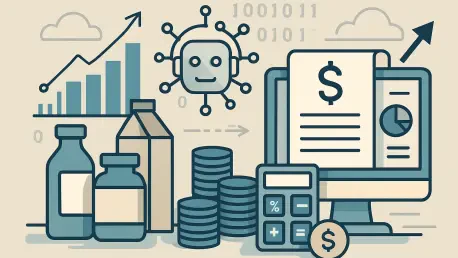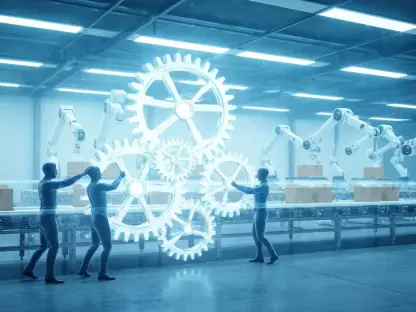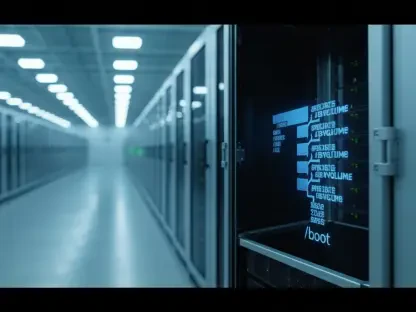I’m thrilled to sit down with Vijay Raina, a renowned expert in enterprise SaaS technology and software design. With his deep knowledge of innovative tools and architecture, Vijay offers unique insights into how technology is transforming industries like consumer packaged goods (CPG). Today, we’ll explore the evolving landscape of financial operations software for CPG brands, focusing on automation, AI-driven solutions, and the challenges of scaling in retail. Our conversation dives into the inspiration behind groundbreaking tools, the impact of automation on finance teams, and the future of retail technology.
How did the idea of creating specialized software for the CPG industry come about, and what specific gaps in the market did you see that needed addressing?
The inspiration came from observing how CPG brands struggled with the complexity of financial operations as they scaled in retail. Many companies were still relying on manual processes and spreadsheets, which led to inefficiencies and errors. There was a clear gap in tools that could automate tedious tasks like cash application and deductions management, freeing up finance teams to focus on strategy. The goal was to build something that not only saved time but also ensured no revenue was lost due to overlooked discrepancies.
What does it mean for a software to be a pioneer in automated financial operations for CPG brands, and how does that distinction shape its role in the industry?
Being a pioneer means offering a solution that fundamentally changes how CPG brands manage their finances by automating processes that were previously manual. It’s about integrating disparate systems into a single platform that handles everything from invoice matching to dispute resolution. This distinction sets the software apart by providing a level of efficiency and accuracy that traditional tools or generic accounting software can’t match, positioning it as a critical partner for brands looking to grow in competitive retail environments.
Can you walk us through how automation in areas like cash application and deductions management transforms the day-to-day work of a finance team in the CPG sector?
Absolutely. Automation takes over repetitive tasks like matching payments to invoices or identifying deductions, which used to consume hours of a finance team’s time. Instead of sifting through spreadsheets, the software processes these transactions in real-time, flags inconsistencies, and generates reports. This can cut down processing time by over 70% in many cases, allowing teams to shift their focus to analyzing data, planning budgets, and strategizing for growth rather than just keeping up with paperwork.
How does a tool that flags deductions and disputes impact a CPG brand’s ability to maintain financial health in the retail space?
It’s a game-changer. CPG brands often deal with complex retailer deductions—think penalties for late shipments or promotional disputes—that can quietly erode profits if not caught early. The software automatically flags these issues as they arise, providing actionable insights and documentation to challenge invalid deductions. This ensures that brands recover revenue that might otherwise slip through the cracks, directly bolstering their bottom line and giving them more confidence in retailer negotiations.
Why do you think expanding into areas like trade promotion management and sales forecasting is a natural progression for financial operations software in the CPG industry?
It makes perfect sense because financial operations don’t exist in a vacuum—they’re deeply tied to sales and marketing strategies. Trade promotion management helps brands optimize their spending on retailer promotions, ensuring they get the best return on investment. Sales forecasting, on the other hand, uses historical data and trends to predict demand, helping brands plan inventory and budgets. Together, these features create a more holistic platform that supports not just financial health but overall business growth in retail.
In what ways does leveraging AI in software solutions provide a competitive edge for CPG brands navigating the challenges of retail scaling?
AI brings a level of precision and insight that manual processes or even basic automation can’t achieve. It can analyze massive datasets to match invoices, detect patterns in deductions, or predict sales trends with remarkable accuracy. Beyond that, AI provides actionable insights for annual planning, helping brands anticipate challenges and seize opportunities. This kind of intelligence gives CPG brands an edge by enabling faster, data-driven decisions in a highly competitive retail landscape.
What is your forecast for the future of AI and automation in the CPG industry over the next few years?
I believe we’re just scratching the surface of what AI and automation can do for CPG. Over the next few years, I expect these technologies to become even more integrated into every aspect of the business, from supply chain optimization to personalized trade promotions. We’ll see platforms that not only automate financial operations but also predict market shifts and consumer behavior with uncanny accuracy. This will empower smaller brands to compete with industry giants, leveling the playing field and driving innovation across the sector.









